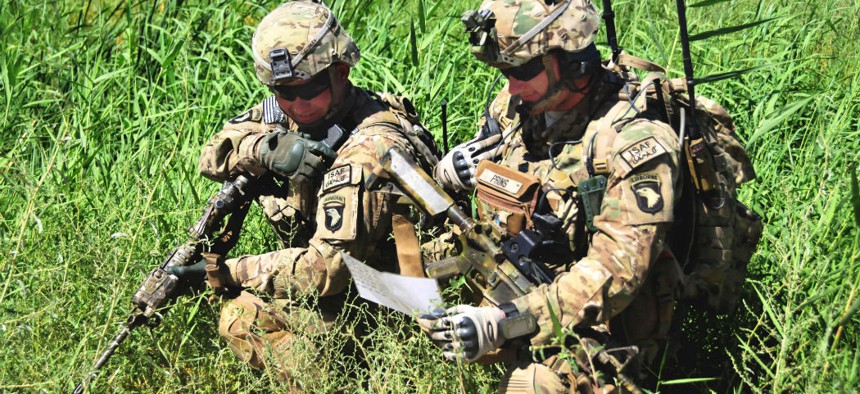New Army Drone is a Mini- V-22 Osprey
The Army Research Laboratory is working on a new V-22 like mini drone that is only 10-inches long.
Shrink a V-22 Osprey tilt-rotor aircraft into a half-pound drone, and you have what could be a game-changing U.S. Army robot aircraft.
The Army Research Laboratory (ARL) is developing a tilt-rotor drone that can hover like a helicopter but then reorient its motors to fly through the air like a fixed-wing aircraft. If that sounds very much like a V-22, it is, with the minor difference that an Osprey is 57 feet long while the experimental drone measures just 10 inches.
ARL released photos of the prototype, as well as a YouTube video of the drone in flight. Even with a paper half-circle attached to the craft to keep it from moving too fast, the drone is seen flying with its propellers in the vertical position like a helicopter, as well as with the propellers level in nearly-horizontal flight.
Tiltrotor drones for hobbyists are not uncommon. But the ARL scientist who birthed the baby Osprey says his design was challenging because of the complex flight dynamics and control issues, not to mention reducing the drone's weight. "In an aircraft, weight is everything," said Steve Nogar, a postdoctoral researcher with ARL’s Vehicle Technology Directorate. “There are a lot of vehicles out there where designers take a quad-rotor and staple it to a fixed-wing aircraft. It may have extra propellers and actuators, and it's not very efficient. You have a lot of wasted weight."
Like its V-22 forebear, the advantages of a tiltrotor drone are that it can takeoff vertically from tight spaces, transition into horizontal flight for maximum speed, and then land straight down. Reducing the weight of the drones to some eight ounces will allow soldiers to carry them in their packs, while the vertical lift capability will enable launch even under confined battlefield conditions.
However, weight still remains an issue for a half-pound Osprey Junior. Such a small airframe can only carry a limited payload. “We cannot put a lot of sensors on this vehicle," Nogar said. It's basically what we can do with just one camera. It takes a lot more work to do the control and study the dynamics of this vehicle, but it we will definitely benefit from the effort once it's finished.”
The next step is autonomy and situational awareness. The tiltrotor drone will need to be able to sense and avoid obstacles such as walls, as well as determine its position during landing. "If you're going to land on something, you need to know very quickly how fast that's coming up to you as you come in to land," said Nogar. "We will need to enable the UAV to sense and perceive its environment using visual techniques such as machine learning."
Thus designing a tiny tiltrotor drone becomes as much a matter of computer programming as of aeronautics. Nogar says he spent much of his time coding software. "I was kind of surprised, but in retrospect it makes sense," he said. "A robot is a computer and you have to program a computer."




